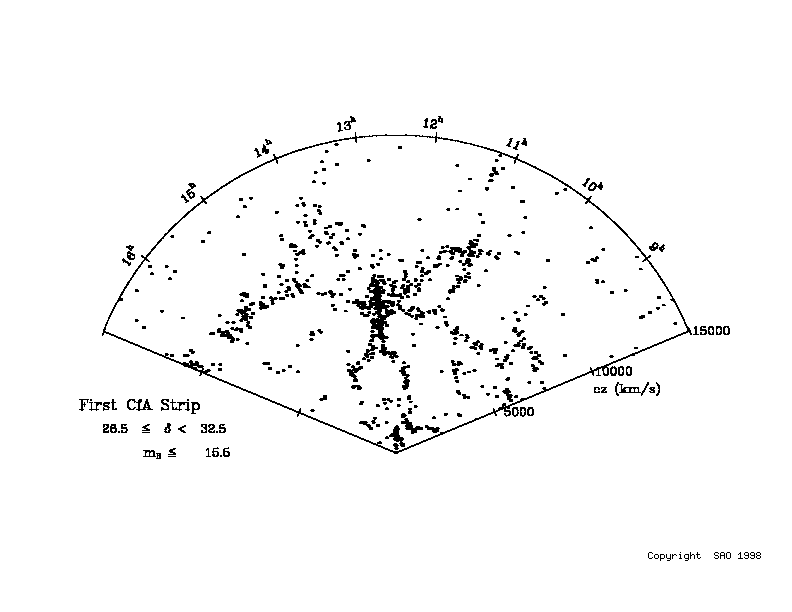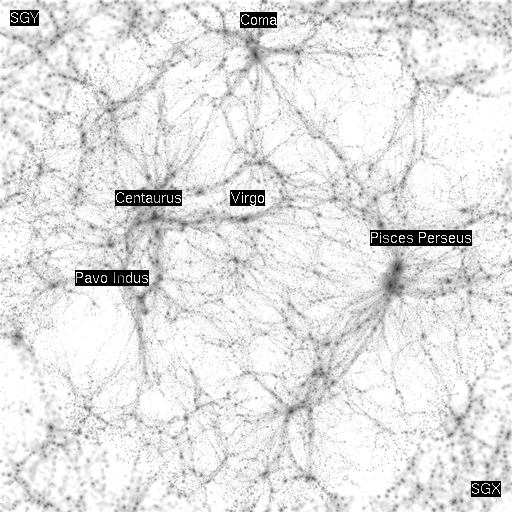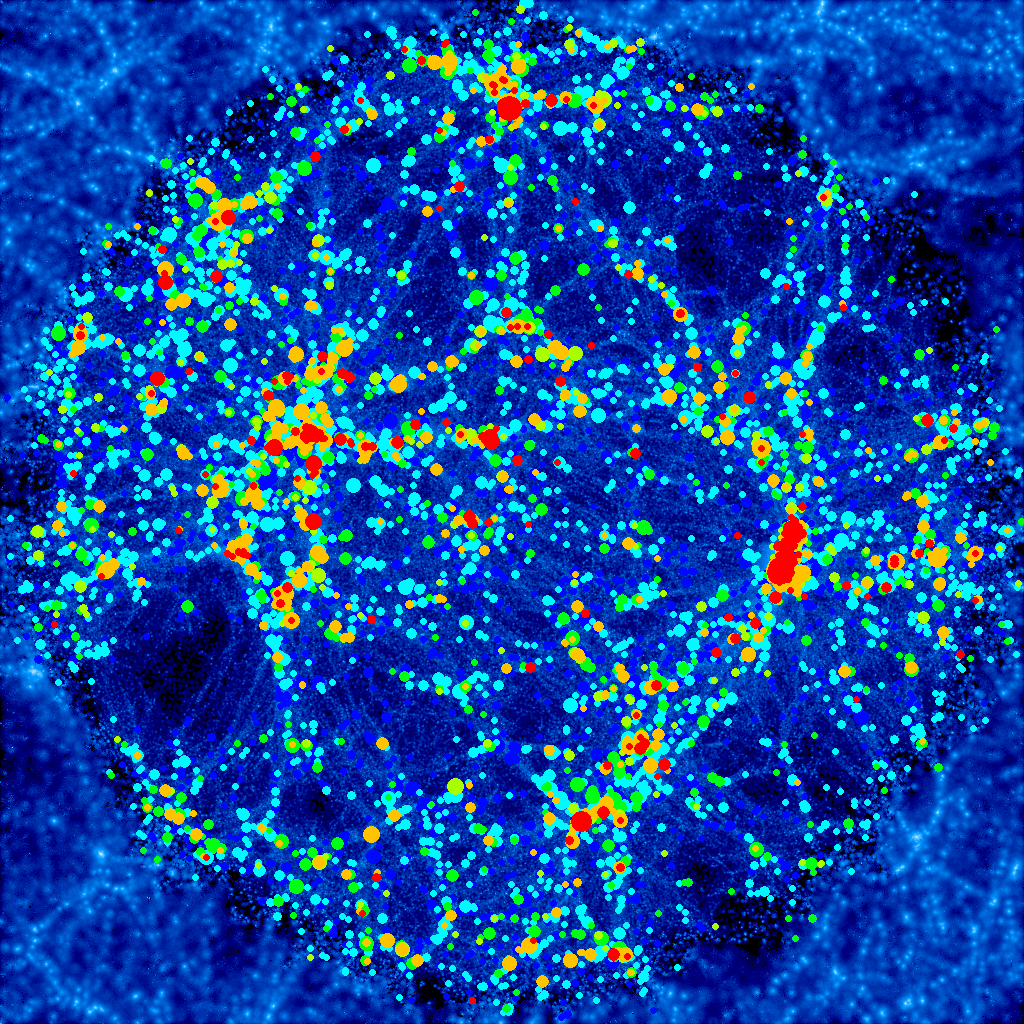Simulating the formation and evolution of galaxies in the Local Universe |
|
Scientists at the Max-Planck-Institut für Astrophysik have simulated how the nearby galaxy population might have formed in a Universe which is made primarily of unseen Cold Dark Matter and whose expansion is accelerated by a cosmological constant. The numerical results agree well with the observed properties of local galaxies and galaxy clusters.

|
|
Figure 1:
Slice of the distribution of galaxies in the local universe as found in the CfA Redshift Survey. The central concentration (the body and head of the "man") is the Coma cluster. Credits: de Lapparent, Geller and Huchra, 1986. |
Numerical simulations of the formation and evolution of galaxies are now routinely performed at the Max-Planck-Institut für Astrophysik (MPA). These simulations have a twofold goal: to better understand the physical processes active on the scale of galaxies and larger, and to be able to discriminate between different competing models for the global evolution of the universe.
Unlike previous simulations where the present-day simulated population of galaxies could be compared with the observations only on a statistical basis, the initial conditions of the simulations shown below were constrained to match the overall pattern of structure in our cosmic neighbourhood. The constraints were derived from the actual local distribution of galaxies observed by the Infrared Astronomy Satellite. This observed distribution was extrapolated backwards in time to shortly after the Big Bang. The simulation then followed evolution forward again to the present, including all the extra detail necessary to see the formation of individual galaxies. The calculations were performed on the T3E supercomputer of the Max-Planck Society's computer centre in Garching (the RZG).
As expected, the final simulated galaxies do indeed lie in a pattern which resembles very well that seen in our cosmological neighbourhood, out to a distance roughly corresponding to that of the Coma cluster, some 260 million of light years away. The resolution of the simulations allows us to follow the evolution of all galaxies brighter than the Large Magellanic Cloud, the most luminous satellite of the Milky Way.
In the simulation red, elliptical galaxies aggregate at the very same positions as real nearby elliptical-rich galaxy clusters such as Virgo, Hydra, Centaurus or Perseus. The blue, star-forming, spiral galaxies reside in dark matter filaments linking those clusters. Large voids are also readily identifiable in the simulated local universe. Again, these regions, almost completely bereft of bright galaxies, are of similar sizes and are located at the same positions as their observed counterparts.

|
|
Figure 2: The present day dark matter distribution in a slice cut through a simulation of a flat universe with cosmological constant. The slice has a side length of 520 million light years, and a thickness of 100 million light years. It contains the so-called "supergalactic plane". The major nearby clusters, like Coma, Virgo, Perseus, are labelled. |

|
|
Figure 3: The galaxy distribution today is shown as colored circles on top of the dark matter. The region shown is the same as in figure 2. The red galaxies are mostly ellipticals, and dominate in high-density regions such as massive clusters, while the green and blue galaxies are spirals, and mostly reside in filaments or at the borders of the voids. Note the large void at the bottom left of the picture. Galaxy formation was followed only in the central circular region of this plot - not in the corners. |
Besides this qualitative concordance between the observed and simulated distribution of massive clusters, we also found quantitative agreement between the structure in the numerical simulations and in catalogues of nearby galaxies.
These simulations can now be used to ask what our neighbourhood looked like at earlier times, for example what a cluster like Coma looked like some 6 to 8 billion years ago. At these epochs, galaxies were undergoing strong interactions and mergers, and forming stars at a much higher rate than they are doing today. This "archaeological" programme parallels the observational quest for more distant and younger galaxies, seen while still assembling "soon" after the Big Bang. Our picture of galaxy formation at such early times is still far from complete, and can be tested by confronting its consequences in more detail with the properties of nearby systems.
| MPA-Home |